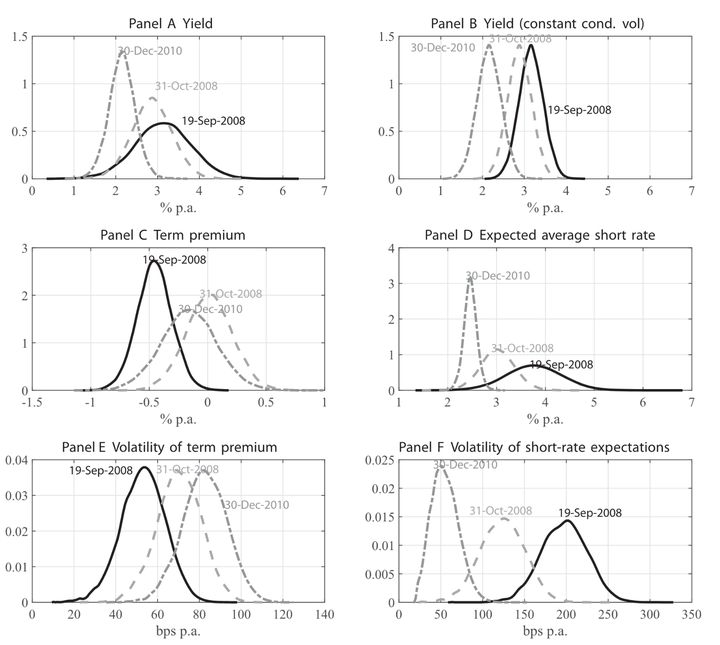
Abstract
Using a novel no-arbitrage model and extensive second-moment data, we decompose conditional volatility of U.S. Treasury yields into volatilities of short-rate expectations and term premia. Short-rate expectations become more volatile than premia before recessions and during asset market distress. Correlation between shocks to premia and shocks to short-rate expectations is close to zero on average and varies with the monetary policy stance. While Treasuries are nearly unexposed to variance shocks, investors pay a premium for hedging variance risk with derivatives. We illustrate the dynamics of the yield volatility components during and after the financial crisis.
Type
Publication
Journal of Finance, 71, June 2016, p. 1393-1436